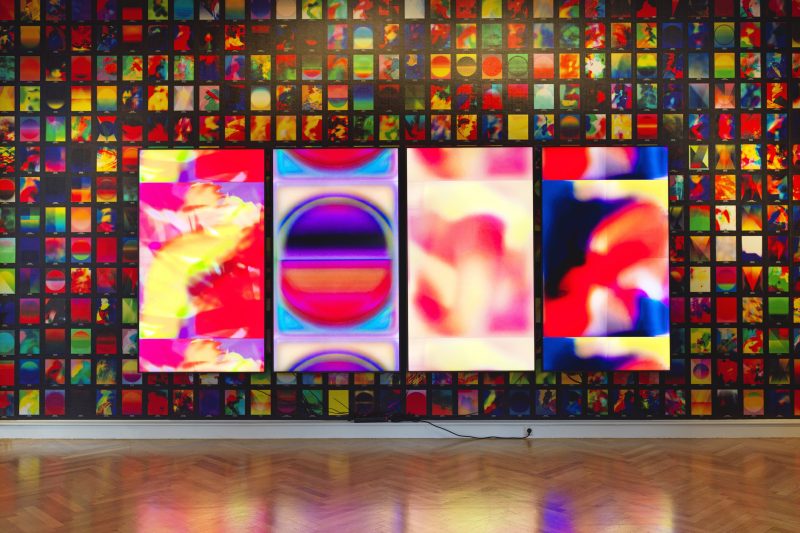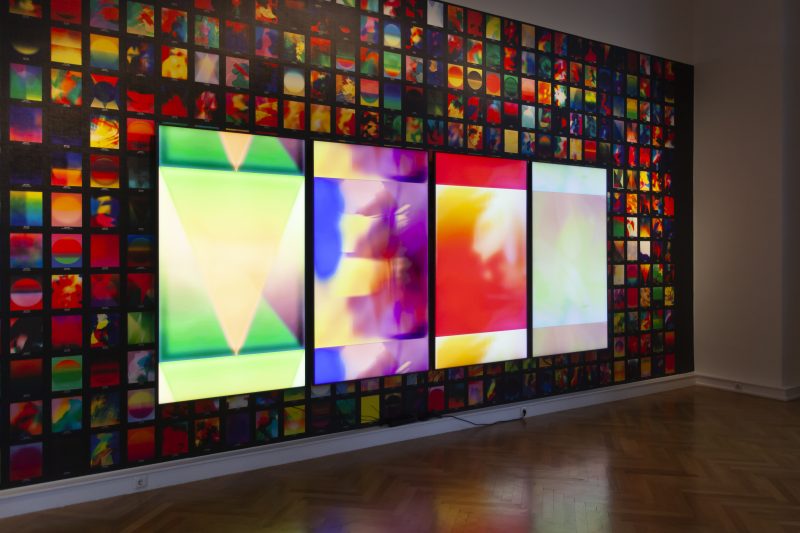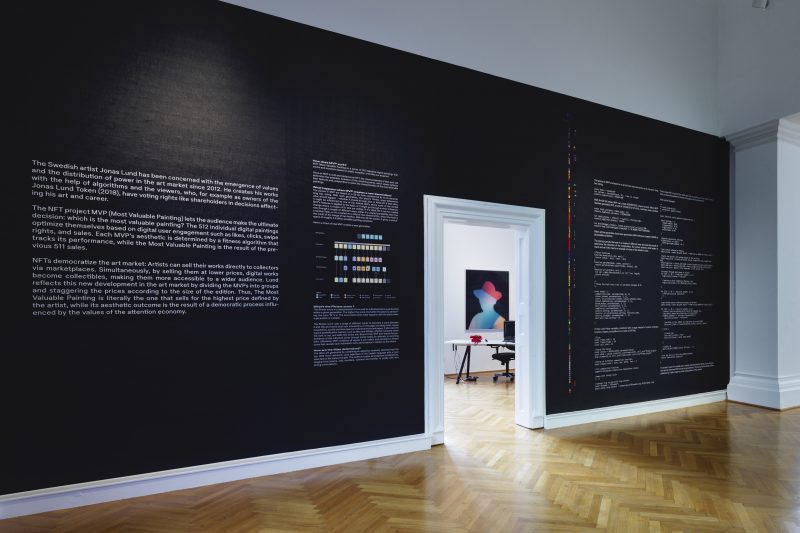MVP (Most Valuable Painting) is a new online participatory project by Jonas Lund, commissioned by Aorist. Questioning how we define the meaning of value in contemporary art across aesthetics, sales, engagement, and influence, MVP consists of 512 individual digital paintings that evolve and transform based on public reception, until they are acquired.
Once an MVP is sold and minted as an NFT, the visual properties of that work will determine the aesthetic evolution of the remaining works, which slowly optimize their features and composition to mimic the characteristics of the more desirable paintings.
Each MVP’s aesthetic outcome is determined by a fitness algorithm that tracks a range of factors, including each individual MVP’s performance in terms of likability and attention-grabbing potential, and considerations such as likes, clicks, and user engagement. The series culminates with the Most Valuable Painting, which is ultimately influenced by the sales of the previous 511 MVPs; the last painting sold holds all the aesthetic value determined by viewer and collector preference.
Lund’s project alludes to the consequence of quantifying value and how the art world and the new digital ecosystem create a unified sense of value when, in actuality, the value of an artwork is a complex interrelation of ever-changing factors alongside the subjective aesthetic tastes of the viewer.
Artist Jonas Lund comments, “The work not only considers how we define the value of an artwork but also exposes the often-brutal commerciality of the art world and the expanding NFT-sphere. When an artwork is only championed in line with its sales merit, there will only be “victory art” or “bad art” – no engagement or critique in between.”
Aorist’s Founder, and pioneering collector in the digital art realm, Pablo Rodriguez-Fraile says, “The algorithm and code developed by Lund, the participatory nature of the community, and the human interaction required to impact the aesthetics of the work make MVP one of the most significant and complex generative projects of our time.”















